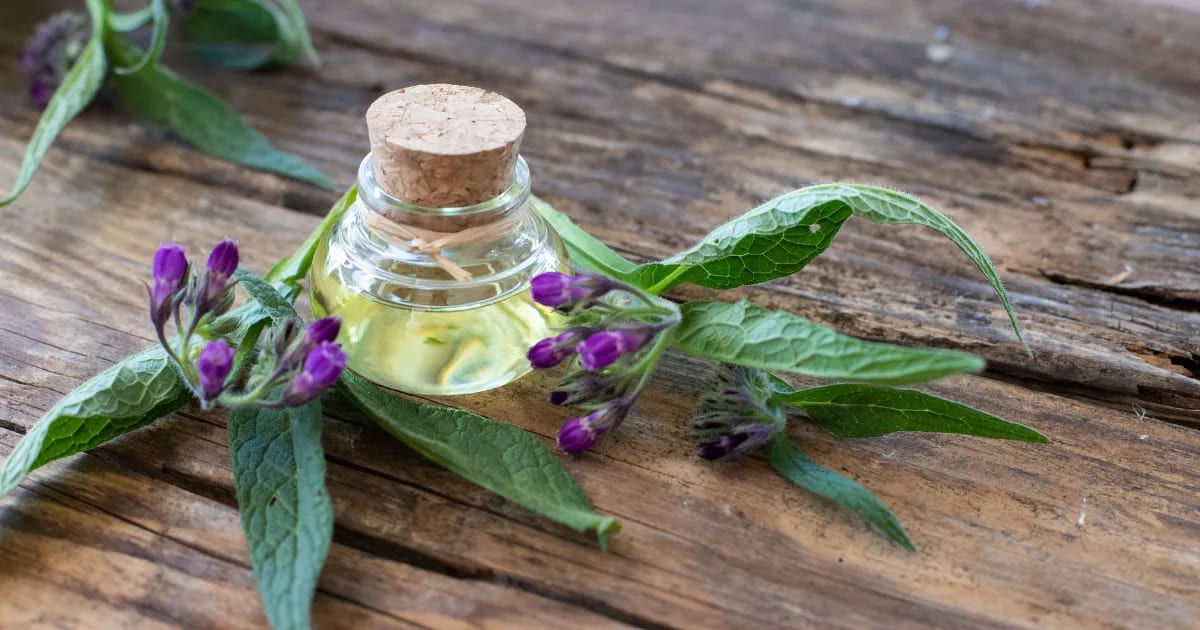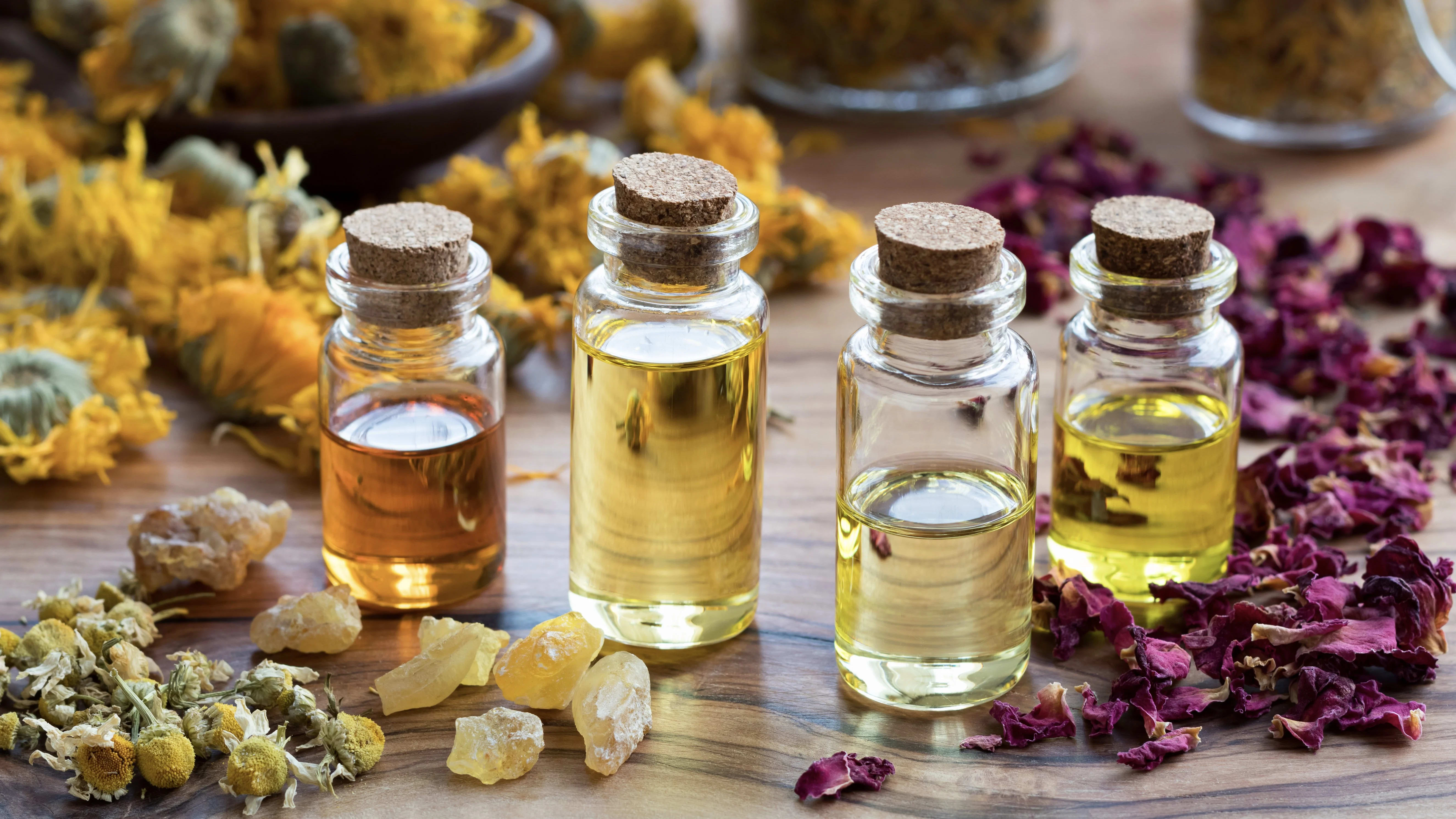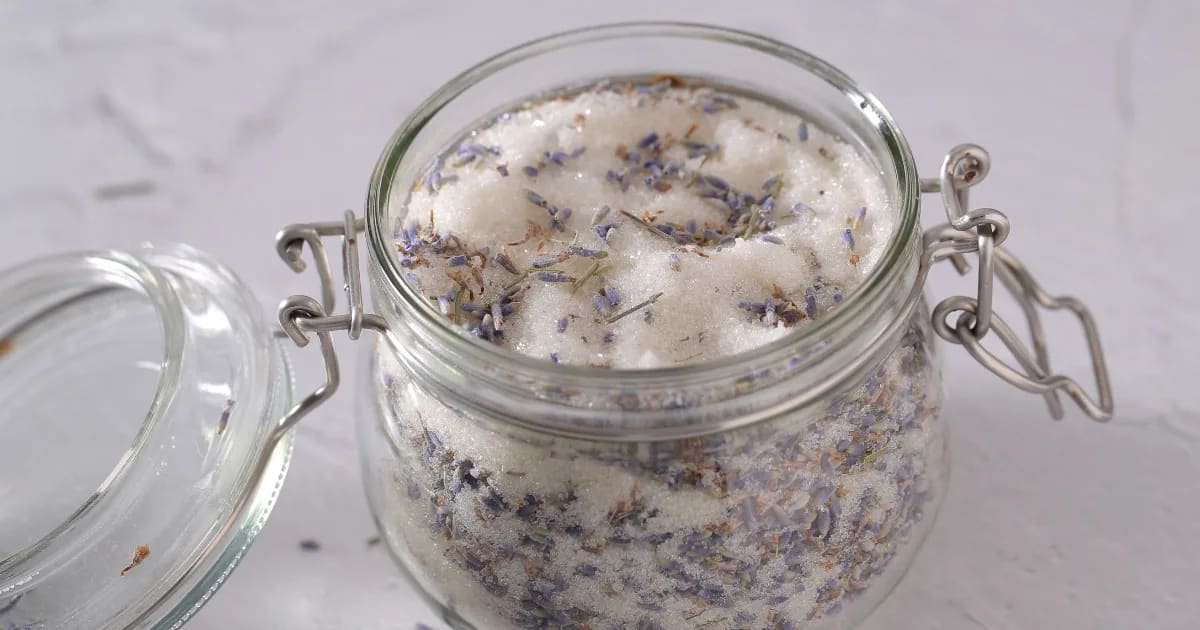Comfrey Hydrosol: Using Knitbone for Fractures & Joint Care

An RN’s Choice for Natural Fracture Care
When I broke my foot while hiking with my two-year-old grandson, I was concerned that the injury might require surgery. As an RN, I know that’s often the only way to reset the delicate bones of the foot. Thankfully, the doctors saw that none of my bones were misaligned. As long as my foot remained immobile, the fractures would heal in the correct positions.
This was a wonderful relief! With my foot snugly encased in a bulky protective boot, I was sent home to rest and keep my foot elevated.
Fractured bones in the feet are quite painful, and I took medication for the next few days to manage the discomfort. But pharmaceuticals are tough on the liver, and I wanted to use them only as much as necessary. So, I also applied a Comfrey hydrosol compress to my foot every two hours. It was so soothing! I believe it sped up my healing process, and after a few days, I was able to stop taking the pain medication and rely solely on Comfrey hydrosol and essential oils to stay comfortable.
In this post, you’ll learn how to use Comfrey hydrosol—aka “knitbone”—to help heal bones and joints. We’ll discuss a natural anti-inflammatory compound in this plant that supports the body's repair process. And we will share the secret to getting essential oils to blend into a hydrosol, so that you can make a comforting Comfrey compress.
Comfrey has long been considered one of the most important healing herbs in natural medicine. Let’s find out what’s behind its healing benefits!
Comfrey: What Research Tells Us
Comfrey (Symphytum officinale) contains allantoin—a natural compound that helps calm inflammation, ease pain, and promote healing. (See a profile of Comfrey hydrosol here!)
In animal studies, allantoin has been found to activate osteoclasts—cells that help remove dead bone ends, clearing the way for new bone to form. This could speed up the time it takes for fractured bones to reconnect and heal.
Allantoin can also relieve pain and stiffness in the joints. A 2004 study compared a group of patients with ankle sprains: Some were given placebos to ease their pain, while others were treated with Comfrey ointment. Researchers found that, “Compared to placebo, the active treatment [with Comfrey] was clearly superior regarding the reduction of pain and ankle edema.” Comfrey ointment succeeded in soothing pain and also effectively reduced swelling from the injury.
Another study in 2005 paired Comfrey ointment against a popular arthritis pain relief product (diclofenac). The study concluded, “Comfrey extract is non-inferior to diclofenac . . . Moreover, the results indicate that . . . Comfrey extract may be superior to diclofenac gel.”
Wow—Comfrey not only held its own against pain relief medication . . . researchers concluded that it might even be better!
Blending with Comfrey Hydrosol
Comfrey doesn’t produce an essential oil, but distilling the plant yields a beautiful aromatic hydrosol. (Learn what a hydrosol is on my blog here.)
Comfrey hydrosol is a wonderful base for essential oil blends. But we know that essential oils and water don’t mix, so we need a “solubilizer” to convince them to mesh together. My preferred product for this is “Solubol,” and I’ll share how to use it in the recipe below. First, let’s highlight some essential oils which complement Comfrey’s actions.
Research has indicated that oils rich in α- and β-pinene can protect bone integrity. Try Cypress (Cupressus sempervirens) or Black Pepper (Piper nigrum).
Allantoin has amazing beneficial properties, but too much of it can stress the liver. Short-term use of Comfrey hydrosol is unlikely to lead to issues, but our livers work hard for us, and they appreciate some love! Thankfully, oils rich in d-limonene are excellent for liver protection. All citrus oils contain notable amounts of d-limonene, so consider Sweet Orange (Citrus sinensis) or Lime (Citrus aurantifolia) in your Comfrey blends.
For extra pain relief (especially joint pain), reach for Gingergrass (Cymbopogon martinii var sofia) which is high in anti-inflammatory camphene, or Juniper Berry (Juniperus communis), which contains the well-researched analgesic α-pinene and β-myrcene. These oils are staunch allies for those with arthritis!
And of course, I like to use classic healing oils for muscles, joints, and skin to support the tissues around broken bones and swollen joints. German Chamomile (Matricaria recutita) and Corsican Helichrysum (Helichrysum italicum) are superb choices.
Safety Considerations
Comfrey is traditionally applied topically as a compress.
I don’t recommend taking Comfrey hydrosol internally, due to the allantoin (which can stress the liver). It’s also not recommended for use during pregnancy.
When using Comfrey hydrosol to care for wounds, be sure to wash the wound thoroughly with soap and water first. Comfrey is such a potent healer that it shouldn’t be used for deep wounds, since it might cause the upper layers of skin to heal faster than the deeper part of the injury, creating a pocket where infection could fester.
Comfrey Recipe
This recipe supports the natural healing process of fractured bones while soothing the traumatized tissues surrounding the break, calming inflammation, easing pain, and protecting the liver.
We’ll use Solubol as a dispersant to get the essential oils and hydrosol to blend together. We need 4 drops of Solubol for every 1 drop of essential oil. So, in this recipe, we need about 200 drops, or 8 milliliters.

Comfrey Comfort Compress
3 fl oz (90 ml) Comfrey hydrosol (Symphytum officinale)
8 ml (200 drops) Solubol dispersant
17 drops German Chamomile oil (Matricaria recutita)
17 drops Cypress oil (Cupressus sempervirens)
17 drops Sweet Orange oil (Citrus sinensis)
Directions
Make your blend in a 100 ml glass bottle. (This is easy as the hydrosol comes in a 100 ml bottle at Aromatics International)
Add 90 mls (a bit less to save room for Solubol and essential oils).
Add the Solubol and essential oils.
Shake gently.
Mist your blend on a soft cloth or pour some into a small bowl and soak a cloth in it. Then rest the cloth gently over your sore bone or joint. Add more hydrosol blend to the compress and apply it every few hours, or as needed.
My Takeaway
From my personal experience, I've found that comfrey hydrosol is a gentle yet powerful ally, especially during times when we feel our most vulnerable. It's comforting to know that by using the right blending techniques, we can pair it with essential oils to craft safe and effective remedies that meet our precise needs. While I hope you never find yourself in a situation where you need to use this remedy, it's reassuring to have this knowledge in your back pocket, just in case.

Essential Oil Foundations & Smarter Blending
References
Guimarães AG, Quintans JSS, Quintans-Júnior LJ. (2013) Monoterpenes with analgesic activity – a systematic review. Phytotherapy Research 27,1-15.
Koll, R., & Klingenburg, S. (2002). Therapeutische Eigenschaften und Verträglichkeit topischer Beinwellzubereitungen. Ergebnisse einer Beobachtungsstudie an Patienten [Therapeutic characteristics and tolerance of topical comfrey preparations. Results of an observational study of patients]. Fortschritte der Medizin. Originalien, 120(1), 1–9.
Koll, R., Buhr, M., Dieter, R., Pabst, H., Predel, H. G., Petrowicz, O., Giannetti, B., Klingenburg, S., & Staiger, C. (2004). Efficacy and tolerance of a comfrey root extract (Extr. Rad. Symphyti) in the treatment of ankle distorsions: results of a multicenter, randomized, placebo-controlled, double-blind study. Phytomedicine : international journal of phytotherapy and phytopharmacology, 11(6), 470–477. https://doi.org/10.1016/j.phymed.2004.02.001
Li, K. L., Lu, J. G., Chen, X. H., Zhang, W. Q., & Liu, W. (2023). The role of the allantoin in promoting fracture healing in osteoclast-deficient zebrafish. Yi chuan = Hereditas, 45(4), 341–353. https://doi.org/10.16288/j.yczz.23-015
Predel, H. G., Giannetti, B., Koll, R., Bulitta, M., & Staiger, C. (2005). Efficacy of a comfrey root extract ointment in comparison to a diclofenac gel in the treatment of ankle distortions: results of an observer-blind, randomized, multicenter study. Phytomedicine : international journal of phytotherapy and phytopharmacology, 12(10), 707–714. https://doi.org/10.1016/j.phymed.2005.06.001
Savić, V., Nikolić, V., Arsić, I., Stanojević, L., Najman, S., Stojanović, S., Mladenović-Ranisavljević, I. (2015). Comparative Study of the Biological Activity of Allantoin and Aqueous Extract of the Comfrey Root. Phytotherapy Research. 29(8) 1117-1122. https://doi.org/10.1002/ptr.5356
Shivananda Nayak, B., Sivachandra Raju, S., & Chalapathi Rao, A. V. (2007). Wound healing activity of Matricaria recutita L. extract. Journal of wound care, 16(7), 298-302.
Smith, D. B., & Jacobson, B. H. (2011). Effect of a blend of comfrey root extract (Symphytum officinale L.) and tannic acid creams in the treatment of osteoarthritis of the knee: randomized, placebo-controlled, double-blind, multiclinical trials. Journal of chiropractic medicine, 10(3), 147–156. https://doi.org/10.1016/j.jcm.2011.01.003
Voinchet, V. and Giraud-Robert, A.-M. (2007) Utilisation de l’huile essentielle d’hélichryse italienne et de l’huile végétale de rose musquée après intervention de chirurgie plastique réparatrice et esthétique. Phytothérapie 2, 67-72.





